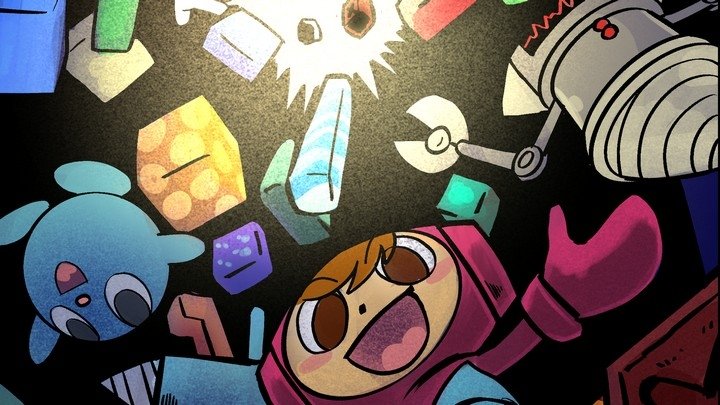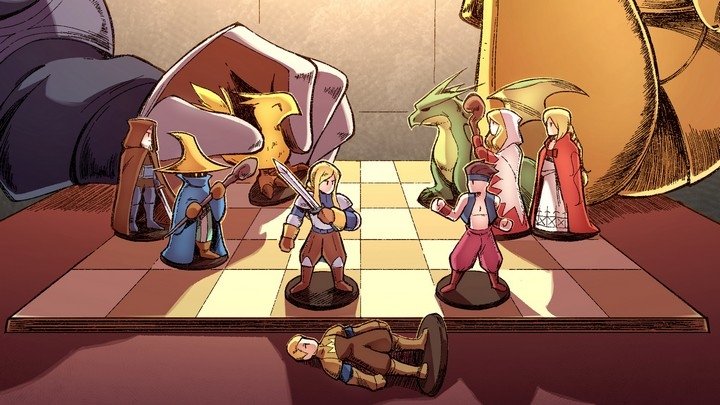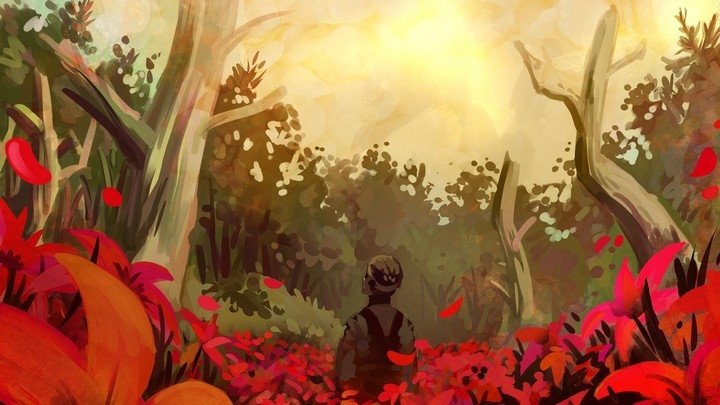The anatomy of Metal Gear, part 1: On-site procurement
Celebrate 30 years of the original stealth action game by exploring how its design teaches players how to sneak.
Following on from its brief run at USgamer, I'd like to knock the dust off my old Anatomy of Games series in time for Metal Gear's 30th anniversary rather than writing another standard hagiography for the game. You already know the story of Metal Gear: Launched in 1987 on the MSX home computer, designed by a young Konami director named Hideo Kojima, made its way to NES in a slightly muddled rendition, became a breakout smash more than a decade later when Kojima took the franchise to PlayStation. Nothing new there, right?
What people don't often discuss these days is how remarkably well that old MSX game holds up 30 years later. Yes, it shows its age in many ways, but by and large the original Metal Gear demonstrates some fantastic, forward-thinking design that allows it to stand up to modern scrutiny. It's a smartly designed and generally quite fair work, unusual for a game of its age. It didn't exactly invent stealth gameplay or enemy lines-of-sight, but it certainly took those loose concepts and forged them into a solid template that plays like a combination of The Legend of Zelda and Capcom's Commando. In the coming weeks, I'd like to break down the design factors that make Metal Gear so enduring, and which so readily allowed the concept to be adapted into a blockbuster franchise.
The images in this series have been taken from the Metal Gear Solid HD Collection for Vita (which includes the original Metal Gear and its sequel as a bonus attached to Metal Gear Solid 3). I apologize for the watermarks; hopefully they won't be too distracting.

The original Metal Gear begins not with an airdrop and jungle infiltration but simply with protagonist Solid Snake entering the fortress Outer Heaven by water before climbing over a fence. Water doesn't come into play as a game mechanic until the second half of the adventure, but Snake's ability to wade through waist-high water here does act as a sort of preview for those portions of the game. (Though I doubt it was consciously intended as a demonstration of the moving through water mechanic, since this sequence is scripted and ends with Snake ascending a fence — something he can't do in-game.)

Before the action begins, you receive a call on Snake's transceiver that you're forced to take. This is a pretty radical game concept for 1987: A built-in hint system that the game's creators can also use to broadcast plot details. I'm trying and failing to come up with an example of anything similar in an earlier game. The standard for hints and exposition in 1987 generally involved the use of non-player characters in RPG towns or hidden in caverns; that element definitely exists here in the form of hostages Snakes rescues from Outer Heaven, who grow chattier the further you venture into the fortress, but not having to keep communications tied to NPCs is a liberating concept.
The transceiver does have a locational element, as with any other hint system to this point. Outer Heaven is divided up into a series of standalone screens similar to the structure of Zelda (more on that later), with no free-scrolling between areas. Each screen has its own transceiver communiqué from one of four different contacts — or, in many cases, no message whatsoever. Occasionally you'll receive a "CALL" prompt to indicate an incoming critical message, but for the most part players are at liberty to seek information at their own pace. It's easy to disregard the transceiver altogether for most of the game, but making regular broadcasts arms the players with lots of information about game mechanics, hints for critical gear to be collected, story bread crumbs, and more. This becomes especially valuable late in the game, once you more or less have access to the entirety of Outer Heaven and have to backtrack all throughout the fortress in order to find essential pieces.

Once you exit the transceiver screen, you can step into the fortress interior. This first screen of Outer Heaven is a chance to orient yourself and get your bearings, and it works a great deal like the first screen of Zelda. You have a couple of different directions in which you can exit this scene (north and east), though unlike in Zelda you won't be getting your equivalent of the wooden sword just yet.
The scenery here is comprised of reinforced concrete walls, crates of what one assumes are weapons, and lots of tanks. It paints a picture of an army mobilizing for some sort of ambitious maneuver, and it creates a bleak and hostile environment for players to contend with. In a nice touch, you will only encounter tanks-as-scenery on the ground level of this first building — not only would it not make sense to have ground vehicles on, say, the roof, it also suggests your infiltration happened in something akin to a storage facility rather than the critical heart of the fortress. Of course it's lightly guarded: It's a parking garage.

You receive the "CALL" message as soon as you step into this screen; you can choose to ignore it, but if you take the message, your mission commander — code-named Big Boss, because why not — will reinforce the fact that you should not be seen. This is a pretty important message, because it speaks to the difference between Metal Gear and its predecessors.
Metal Gear's game design was heavily informed by the limitations of the MSX platform. The computer couldn't really handle intense action and free-scrolling, so Kojima's team created a military action game in which the point was to skirt around combat. Certainly Metal Gear has its share of blistering action, but for the most part the name of the game here is avoidance.

The first time you enter Outer Heaven, it's probably more tempting to head east than north: The route north is obstructed somewhat by tanks, whereas you have a clear shot to the east from your starting position in the fortress. It doesn't really matter either way, but visually and in terms of level design, you're kind of "pushed" to the right.
This will be your first encounter with the enemy. Two soldiers patrol this room, and Snake doesn't have a weapon with which to fight them. You can punch enemies, yes, but if you go storming into this area and try to mix things up, you'll probably end up dying to one soldier's rifle while punching the other guy into submission. This scene is a little intimidating at the outset, so players are likely to pop in, see the patrolling guards, and say "Nope" right back to the entrance screen.
But let's say you do stick around. It's absolutely feasible and possible for an unarmed Snake (he couldn't very well carry a gun if he was infiltrating by water, now, could he? He'd have gotten his powder wet) to handle this scenario safely. You just need to understand how the game works, and this screen's design helps communicate the rules and mechanics of Metal Gear quite effectively.
First, it's important to understand that the game treats each screen of the fortress as a standalone, self-contained space. The only time actions bleed over from one screen to another are during alert phases, once you've been spotted. Otherwise, you never have to worry about your actions in one screen affecting another. So you can almost consider each screen like this a sort of puzzle to be solved: How to you make it from the west entrance of this scene to the east exit?
Secondly, line of sight. Enemies will only go on the offensive if they know Snake is present, and generally speaking that only happens if you perform a loud action (i.e. fire an un-silenced weapon) or if they spot you. Line of sight is a little tricky in this game, because it seems to be extremely narrow — as in, only a few pixels wider than a soldier's head. But sometimes they'll spot you even if you seem to be outside that boundary, so it's always best to play safe. The important thing to note is that (1) soldiers can only see Snake if they're facing him, and (2) you can't be seen if there's an obstruction between you and the enemy. Although there are quite a few exceptions, for the most part you'll find that guards are situated so that you don't have to worry about being spotted when you enter a screen — you'll usually be able to step into a scene and have a moment to size up the situation. (The game provides a tool to allow you to prepare in advance and be alert for dangerous guard placement pretty early.)
This screen, then, makes for a pretty simple tutorial space. The two guards default to standing together between the two tanks, facing north. They walk at slightly different speeds upward, then turn in opposite directions once they reach the upper walk space. After standing for a moment, they'll advance in their respective direction until they reach the other side of the nearest tank. There's ample time in here for Snake to dash from west to east, as the guards don't face south for quite a while. But you can also try to pick them off, either by rushing up behind the trailing guard and punching him from behind or else by slipping up alongside one of the tanks and punching a guard from around the corner before he turns in your direction. If you leave the screen, their patrol routes reset and you can start from scratch.
Of course, at the moment, there's no reason to head east. All that waits is a dead end and a locked door. This eastward path is, for the moment, a fruitless venture. So, it's back to the entrance and north.

To the north of the starting point, you'll find a more complex situation: Two guards in staggered positions on the other side of a large barrier. You don't have to worry about being spotted as long as you hang out beneath the crates to the south, but making your way to the north exit is a much more intimidating prospect than the eastward trek of the other screen. The two guards don't move in unison, and they patrol along paths that involve lengthy lines of sight that leave Snake exposed both above and below the upper set of crates. Meanwhile, the crates' horizontal arrangement leaves very little room to maneuver past them. It's a dangerous-looking bottleneck.
On the other hand, you can duck through the east passage without fear of being spotted.

This leads to a courtyard containing three trucks. You can actually enter the backs of the trucks, though this may not be immediately obvious. That's why, after a few seconds, an enemy soldier emerges from the center truck. He faces down and then right, so Snake won't be spotted immediately if the player stands at the entrance to this screen. The game shows off the function of the trucks as "rooms" with an enemy character programmed to give players a fair chance. It's a subtle design choice, but it makes for an excellent example of "show, don't tell." The game could buzz you with a codec to tell you to enter the trucks, but instead uses a more diegetic approach.
(You can, of course, head north here, but all you'll find is a dead end. Instead, what you need to do here is enter the trucks and explore.)

Each of the three trucks contains valuable items. From left, you'll find rations (capable of restoring health), Card 1 (the first of many keys you'll have to collect), and binoculars. Card 1 is the most critical of these items, since it unlocks doors that would otherwise amount to dead ends... but the best of these items is without question the binoculars.

When you equip binoculars, the game action freezes and allows you to scout in what it terms "telescope mode." Telescope mode allows you to see the default arrangement of the current screen and, more importantly, peek ahead a single screen. You can look ahead in any direction provided you have a clear path ahead that way; in other words, if you can walk from one screen to the next, you can glance ahead before you move. You cannot, however, look across solid walls or other barriers even if two screens are adjacent within the fortress — so no peeking ahead here to areas locked down under Card 3 or 4.
Well, except the space immediately north of the trucks, which requires Card 4 to actually access; you can't climb this fence to take on the dogs yet. Climbing is for cutscenes only!
So, at this point the game has handed players several items... none of which happen to be weapons. You've acquired a key for exploration, a tool for avoiding enemies, and a defensive item for healing if things go poorly. It's not a coincidence that Metal Gear waits so long to arm players. Again, combat is not the point. Fighting is more of a matter of last resort in this adventure, and Snake is much better off using the tools he's been given here to find ways to circumvent conflict whenever possible.
A final interesting note for this installment: The trucks on either end are empty inside save for the items you can collect. Inside the middle truck, however, you'll encounter a soldier — the same soldier who steps out of the truck after a few seconds. It's a nice touch that really helps drive home the consideration given to the level design here. Despite the limitations of the technology and the necessary abstractions and cheats of 8-bit gaming, Metal Gear attempts to create a consistent world for players. This painstaking care is precisely why such an ancient stealth action game holds up so many years later... and why the Metal Gear series endured for so long.




